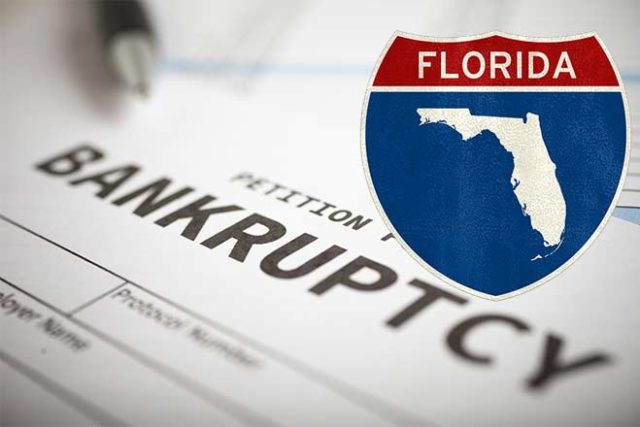
When considering bankruptcy in Florida, there are several requirements you’ll first have to meet. Most of these are related to your finances, but those who live part-time in one state or who have a residency status that is anything less than set in stone may be curious about the Florida bankruptcy residency requirements.
Another crucial thing to remember is that even states themselves are divided into various federal districts. It is these districts – not just the state in which one resides – that will typically determine where a person should file for bankruptcy. However, this comes into question if the person who is filing has moved in the last few months, has property elsewhere, or is not a legal resident of this location.
It’s important to note that where you live doesn’t actually impact whether you can file for bankruptcy, as that is your legal right in all parts of the United States. However, your state and specific area of residence will impact where your bankruptcy is filed, who handles your case, and where important meetings will take place during the course of the proceedings.
Here’s what you need to know about the Florida bankruptcy residency requirements:
Figuring Out Where to File: In Which District Do You Reside?
In the United States, bankruptcy is handled on the federal level. This means that while your local courts may preside over your case, the actual act of filing for bankruptcy and receiving a discharge of your debt is granted to you by the federal government. As such, it is your federal district – not your city, county, or even your state – that determines where your bankruptcy should be filed.
In Florida, there are three federal districts. The northern, middle, and southern districts divide the state into three somewhat-equal areas by both area and population density, giving the courts the chance to balance the cases they handle. Determining which district you live in can help you figure out where to file.
Florida’s three districts are further separated into federal court service areas. In the northern district, these include the following:
- Gainesville division – This court services the Alachua, Dixie, Gilchrist, Lafayette, and Levy county areas.
- Panama City division- This court services the Bay, Calhoun, Gulf, Holmes, Jackson, and Washington county areas.
- Pensacola division- This court services the Escambia, Okaloosa, Santa Rosa, and Walton county areas.
- Tallahassee division- This court services the Franklin, Gadsden, Jefferson, Leon, Liberty, Madison, Taylor, and Wakulla county areas.
In Florida’s middle district, there are four federal bankruptcy court divisions. These include the following:
- Fort Myers division – This court services the Charlotte, Collier, De Soto, Glades, Hendry, and Lee county areas.
- Jacksonville division – This court services the Baker, Bradford, Citrus, Clay, Columbia, Duval, Flagler, Hamilton, Marion, Nassau, Putnam, St.Johns, Sumter, Suwannee, and Union county areas.
- Orlando division – This court services the Brevard, Lake, Orange, Osceola, Seminole, and Volusia County areas.
- Tampa division – This court services the Hardee, Hernando, Hillsborough, Manatee, Pasco, Pinellas, Polk, and Sarasota county areas.
The southern district of Florida has five divisions. Most of these divisions service only one county each, but these counties are large and populous. Again, these divisions exist so that no one court is overwhelmed with the area and population it serves.
The state’s southern district is divided this way:
- Fort Pierce division – This court services the Highlands, Okeechobee, Indian River, St. Lucie, and Martin County areas.
- West Palm Beach division – This court services the Palm Beach County area.
- Fort Lauderdale division – This court services the Broward county area.
- Miami division – This court services the Miami-Dade County area.
- Key West division – This court services the Monroe county area.
Generally, you will file for bankruptcy in the district in which you reside. However, there are some exceptions.
Can – or Should – You File in Another Federal District?
There are several instances in which you might be required to file in a different federal district than the one where you live. For example, if your legal residence or mailing address is elsewhere, you may be required to file in that district.
Likewise, if you have moved into your current district within the last 180 calendar days, you will likely be required to file in the district where you lived or in which your assets were located previously.
How Florida Bankruptcy Residency Requirements Can Impact Your Case
While it may seem obvious, a mistake in the paperwork you submit when filing your bankruptcy can have consequences. These may be as minor as having to resubmit – beginning the process again – or as major as having your case thrown out entirely. Thankfully, these mistakes are easy to avoid with careful scrutinization from your legal team and an understanding of the requirements and regulations that are in place for your specific type of bankruptcy.
While the Florida bankruptcy residency requirements will never prevent you from filing for bankruptcy, they can have an impact on how your case is handled and by whom. To get all of the information regarding where to file and how to stay within these requirements, consult the experienced staff at the Van Horn Law Group.












